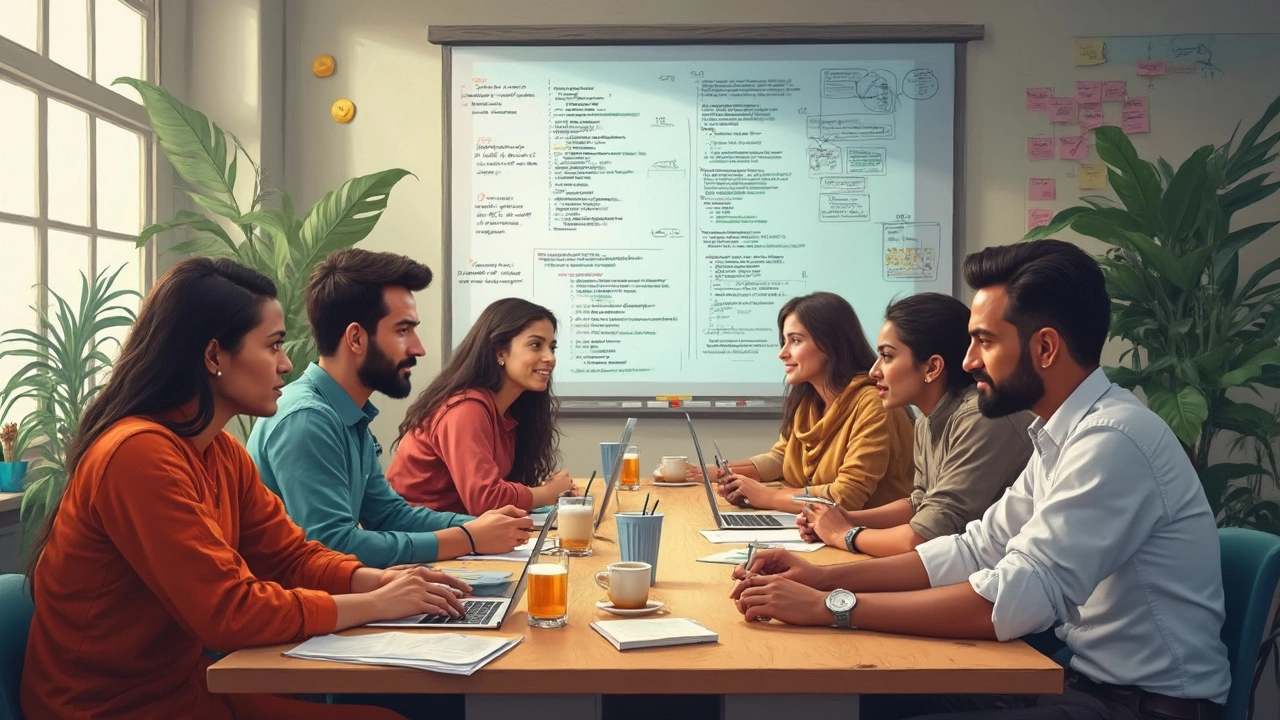Is WordPress Dev Hard? A Real-World Look at Building with WordPress
You might have heard that WordPress is easy—just click to install, grab a theme, and you’re up and running. But let’s not kid ourselves: once you start messing around under the hood, things get trickier. If you actually want to build your own plugins, change themes from scratch, or tweak things beyond the basics, you’ll run into some head-scratching moments.
Most people hit their first wall when they move beyond dragging blocks in the editor. Stuff like custom post types, hooks, or even fixing a broken site after a plugin update turns out to be a different ball game from just writing posts or changing colors. And don’t get me started on debugging weird errors—nobody tells you how addictive yet frustrating it can get.
So, is WordPress dev hard? It really depends on what you want to do and how deep you want to go. Lots of folks start with zero knowledge, pick up bits by Googling stuff, and get pretty far without any coding at all. But if you’re dreaming about custom solutions—maybe a slick membership area, or integrating with external services—you’ll need to get your hands dirty and learn what’s actually going on behind the scenes.
- What Makes WordPress Development Challenging?
- How Much Coding Do You Really Need?
- Choosing the Right Tools and Plugins
- Common Roadblocks (And How to Dodge Them)
- Pro Tips for Faster Learning and Fewer Headaches
What Makes WordPress Development Challenging?
WordPress looks simple until you leave the basics behind. The first major challenge is dealing with updates. Plugins and themes regularly roll out changes, and sometimes they clash, leaving you with a broken site and no hint where to start. Compatibility issues are the stuff of daily life for WordPress devs.
Then there’s the famous "white screen of death"—your site just stops loading, and all you see is a blank page. If you don’t know how to turn on debugging or check error logs, it’s a nightmare. And yes, it happens to people at all skill levels, not just beginners.
Security is another headache. WordPress powers 40% of all sites, which makes it a favorite target for hackers. If you skip updates, use weak passwords, or trust dodgy plugins, you’re basically leaving the door open for trouble. Knowing how to secure a site goes way beyond installing a security plugin. You need to learn about user permissions, database security tweaks, and how to spot shady code.
Speaking of plugins, there are over 60,000 of them—finding the right one takes real research. Not every plugin plays nice with others, and too many can slow your site to a crawl. Sometimes, none of them do exactly what you want, so you’re stuck customizing or even writing your own. Plus, plugin authors sometimes disappear, leaving their code unsupported.
And let’s talk documentation. While WordPress has tons of guides, not all of them fit your version or your situation. Sometimes you’re left piecing together three blog posts and an old forum answer just to fix one bug. Real-world WordPress development is as much about troubleshooting and learning on the fly as it is about actual coding.
- Dealing with endless updates and plugin compatibility hassles
- Fixing the white screen of death without a clear explanation
- Keeping sites secure when hackers are always probing for weaknesses
- Sorting through low-quality plugins or writing features yourself
- Piecing together help from scattered or outdated documentation
The bottom line? It’s not just about building pretty websites. The challenges usually show up when you need to fix, protect, or seriously customize your site. But those are also the parts where you learn the most.
How Much Coding Do You Really Need?
Here's the straight answer a lot of folks want: you don't have to be a full-on programmer to start working with WordPress. You can build a decent site with zero coding just by using themes and plugins. But if you want something custom, sooner or later you'll hit a wall where a little code fixes a big headache.
So what kind of coding are we talking about? In the WordPress world, PHP is king. CSS and HTML are must-haves for changing how things look, while a little JavaScript can make your site interactive. Here’s a simple breakdown:
- HTML & CSS: Basic skills you need for customizing the look and layout. Editing themes or tweaking a plugin’s design? You’ll use these every time.
- PHP: The backbone of WordPress. Know this to build custom themes, plugins, or fix bugs. Copy-pasting code snippets from forums gets you far, but real progress comes when you actually understand what that snippet does.
- JavaScript: Mostly needed for fancy stuff—think dynamic sliders or instant search bars. Not required for every job, but modern WordPress uses it more and more (hello, Gutenberg editor).
Check out what skills match up with different tasks:
| Task | Need to Code? | Languages/Tools Used |
|---|---|---|
| Install themes/plugins | No | Dashboard clicks |
| Edit theme style/colors | Sometimes | CSS, HTML |
| Build custom page template | Yes | PHP, HTML, CSS |
| Create custom plugin | Yes | PHP, sometimes JS |
| Troubleshoot errors | Usually | PHP, understanding error logs |
According to a 2023 Stack Overflow survey, 44% of WordPress developers say they started with almost no coding knowledge. What helped most? Editing snippets, trial and error, and tons of Google searches. It's totally normal to start small—fix a broken header, change a menu, or add a widget—then gradually chew on bigger changes.
Bottom line: at first, less code is fine. Just know that the more you learn, the less you'll rely on plugins and the more control you get. Think of it like leveling up in a game—the further you go, the more power (and options) you unlock.

Choosing the Right Tools and Plugins
Nailing down the right tools and plugins makes WordPress development way easier. If you skip this step or go with random stuff, you’ll waste hours fixing issues you could have dodged. With over 60,000 free plugins in the WordPress repository, picking the good ones is half the battle.
Start simple: if you’re working on a regular blog or business site, you probably only need basics like contact forms (think Contact Form 7 or WPForms), SEO helpers (Yoast SEO gets the job done for most), and maybe a caching plugin like WP Super Cache to speed things up.
If you want to get into e-commerce, WooCommerce is the no-brainer—installing it puts a full shop on your site in minutes. But don’t just load up your site with plugins. Bugs, security holes, and slow loading times usually come from having too many or using sketchy ones. It pays to check when a plugin was last updated and how many people actually use it. Here’s a quick table with data from the WordPress plugin directory:
| Plugin Name | Active Installations | Last Updated |
|---|---|---|
| Yoast SEO | 5+ million | June 2025 |
| Contact Form 7 | 5+ million | May 2025 |
| WooCommerce | 5+ million | June 2025 |
| WP Super Cache | 2+ million | June 2025 |
Don’t forget about your main development tools. For quick theme edits, a code editor like VS Code is your best friend. Local server apps—like LocalWP or XAMPP—let you build and break things safely on your own computer before going live. And if you’re serious about the *WordPress* game, learn a bit about version control using Git. This saves your bacon when something breaks (and believe me, it will at some point).
If you want a pro opinion, check out what developer Tom McFarlin says:
“When in doubt, go with tools and plugins that are widely used and supported. Shortcuts and unknown plugins can end up costing you more time and headaches in the long run.”
Bottom line: don’t install everything that looks cool. Stick with solid, well-updated plugins and tools that actually solve your problems. It’ll save you tons of energy (and probably a few gray hairs).
Common Roadblocks (And How to Dodge Them)
Pretty much everyone building with WordPress runs into headaches sooner or later. Here are the big ones most folks trip over, and what you can do about them without losing your mind.
1. Plugin Conflicts
You install one plugin, everything’s fine. Install a few more, and suddenly your contact form vanishes or your site slows to a crawl. This happens a lot—different plugins sometimes step on each other’s toes because they’re trying to change the same thing at once.
- Keep only the plugins you actually need. Less is definitely more here.
- Update your plugins regularly and one at a time. That way, if stuff breaks, you know who the culprit is.
- Back up your site before adding or updating plugins. Restoring is way less stressful than trying to patch things up in a panic.
2. PHP Errors and White Screens
You edit some code, refresh…and boom, your site is just a blank screen (known as "white screen of death").
- Always test any new code in a staging site first, not live.
- Turn on debugging in wp-config.php—that way, you get error messages instead of silence.
- If things go wrong, deactivate plugins or themes one by one to find the problem child.
3. Slow Performance
A slow site annoys everyone—users bail, Google ranks you lower, clients get grumpy. A 2024 Kinsta survey showed nearly 37% of WordPress users pointed to slow sites as their top pain point.
- Pick good hosting. Cheap hosting usually means sluggish response times.
- Compress your images. Big, raw photos are site killers.
- Add a caching plugin (WP Rocket, for example) to make things snappier.
| Issue | Percent of Users |
|---|---|
| Slow load times | 37% |
| Plugin conflicts | 28% |
| Security issues | 18% |
| PHP errors | 11% |
| Themes not updating | 6% |
4. Security Issues
WordPress sites are sometimes magnets for bots and hackers, especially if you don’t keep things updated.
- Always keep WordPress, plugins, and themes current.
- Install a solid security plugin like Wordfence or Sucuri.
- Avoid using "admin" as your username and use strong passwords.
If you get stuck, don’t waste hours solo. Ask on WordPress.org forums, check Stack Overflow, or join a dev Discord server. Other developers have almost definitely seen your problem before, and you’ll save yourself a ton of stress by learning from their mess-ups instead of making your own every time.

Pro Tips for Faster Learning and Fewer Headaches
If you want to move from "just figuring stuff out" to actually enjoying the process, you need to build smart habits. Trust me, you're not alone when you get stuck—most WordPress devs still Google things, even after years of experience. Here’s how you can stop spinning your wheels and start making real progress on your WordPress projects.
- Stick With Official Documentation. The WordPress.org docs are way better than random YouTube tips or old blog posts. Go straight to the source, especially for functions, hooks, and troubleshooting.
- Use Local Development Tools. Tools like Local (by Flywheel), XAMPP, or Laragon give you a safe place to break things without risking your live site. Set things up locally so you can experiment, test, and learn—no pressure.
- Leverage Starter Themes and Frameworks. Instead of reinventing the wheel, start with a solid theme like Underscores (_s) or a popular builder like GeneratePress or Astra. This’ll save you hours of head-banging over the same problems.
- Get Comfortable With PHP Basics. You don’t need to be an expert, but understanding PHP syntax, variables, and basic loops will get you out of most beginner jams. Same goes for CSS—just enough to not get surprised by wonky layouts.
- Join a Community. Reddit’s r/WordPress, official forums, or even Twitter (X) are gold mines for real-world advice. Don’t be shy—ask questions. Chances are, someone’s already been there and solved it.
- Version Control Is Your Friend. Learn the basics of Git. Even if you’re just tracking changes for yourself, you’ll thank yourself that time you mess up a file and need to “rewind.”
Ever wondered where most people get stuck? There was a survey from WPShout in 2024 with over 1,500 WordPress devs. Here’s what tripped them up the most:
| Area | Percent Struggled |
|---|---|
| Custom Post Types | 49% |
| Plugins Conflicts | 41% |
| Theme Customization | 38% |
| Security Issues | 23% |
| Site Speed Optimization | 19% |
One last quick hack: Copy someone’s working site and tinker with it. Reverse engineering is one of the fastest ways to learn. Try breaking things (on purpose) on a test site and fixing them. You’ll build muscle memory for debugging and “Oh snap!” moments.





